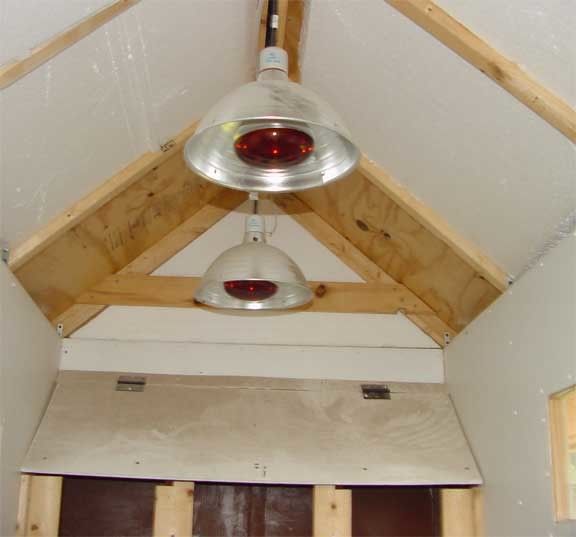- May 21, 2009
- 152
- 0
- 109
When I built my coop last summer I insulated it with 1 1/2" foamboard and installed two deep red heat lamp fixtures. I wired in a two stage thermostat with a remote sensor. The thermostat is mounted in an electrical inclosure on the outside of the coop. It's been close to 0 degrees F. here in the thumb area of Mich. for the last couple of nights. So far only one of the two heat lamps has been needed to maintain a 35 degree coop temperature. By the way, the white interior is painted 1/4" sheathing on the inside of the coop, not bare insulation. The pic was taken before the last two sections of insulation were installed. I did'nt cover the roof sections with sheathing as the chickens can't reach it to peck at.






